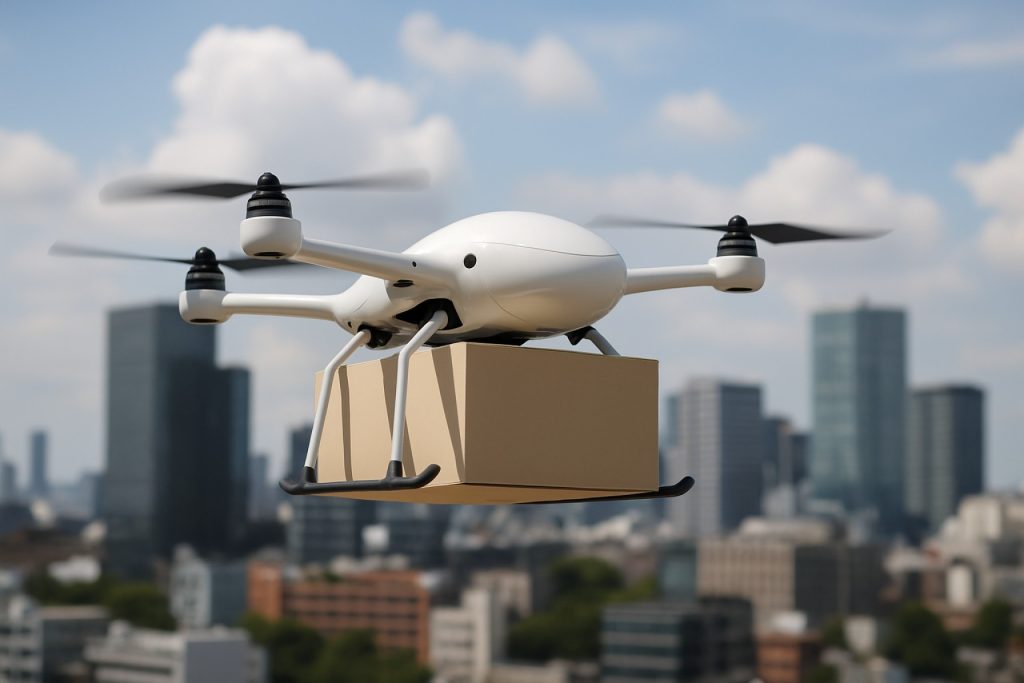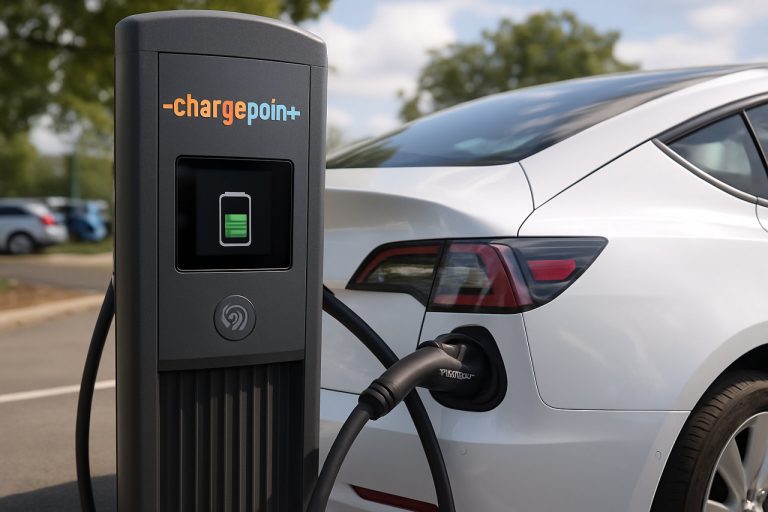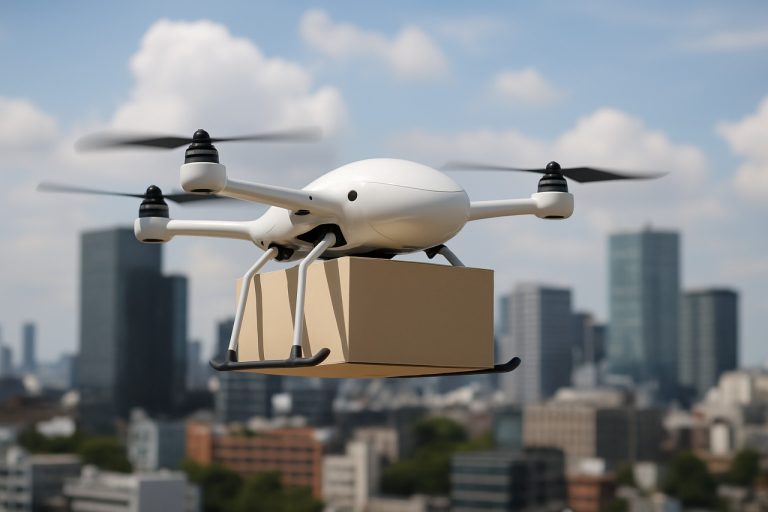
Autonomous Aerial Logistics Industry Report 2025: Market Dynamics, Technology Innovations, and Strategic Growth Insights. Explore Key Trends, Forecasts, and Opportunities Shaping the Next 5 Years.
- Executive Summary & Market Overview
- Key Technology Trends in Autonomous Aerial Logistics
- Competitive Landscape and Leading Players
- Market Growth Forecasts (2025–2030): CAGR, Revenue, and Volume Projections
- Regional Analysis: North America, Europe, Asia-Pacific, and Emerging Markets
- Future Outlook: Innovations, Regulatory Shifts, and Market Expansion
- Challenges and Opportunities: Navigating Barriers and Capitalizing on Growth Drivers
- Sources & References
Executive Summary & Market Overview
Autonomous aerial logistics refers to the use of unmanned aerial vehicles (UAVs), commonly known as drones, and other autonomous flying systems to transport goods, materials, and parcels without direct human intervention. This sector is rapidly transforming supply chain and delivery models across industries, driven by advancements in artificial intelligence, sensor technology, and regulatory frameworks. By 2025, the global autonomous aerial logistics market is poised for significant growth, propelled by increasing demand for faster, more flexible, and cost-effective delivery solutions.
According to McKinsey & Company, the commercial drone delivery market is expected to surpass $30 billion in annual revenues by 2030, with logistics and parcel delivery representing a substantial share. The COVID-19 pandemic accelerated the adoption of contactless delivery methods, and this momentum continues as e-commerce volumes surge and urban congestion challenges traditional ground-based logistics. Key players such as Amazon (Prime Air), UPS (Flight Forward), and Wing (an Alphabet subsidiary) have made significant investments in autonomous aerial delivery networks, conducting thousands of test flights and limited commercial operations in select markets.
The market landscape in 2025 is characterized by a mix of pilot programs, regulatory sandboxes, and early-stage commercial deployments. The U.S. Federal Aviation Administration (FAA) and the European Union Aviation Safety Agency (EASA) have both introduced frameworks to enable beyond-visual-line-of-sight (BVLOS) operations, a critical enabler for scalable autonomous logistics. According to Grand View Research, North America and Europe are leading in regulatory readiness and infrastructure investment, while Asia-Pacific is emerging as a high-growth region due to urbanization and government support.
Key market drivers include the need for rapid last-mile delivery, the expansion of healthcare logistics (such as medical sample and vaccine transport), and the push for sustainability through reduced road congestion and emissions. However, challenges remain, including airspace integration, public acceptance, cybersecurity, and the high upfront costs of autonomous systems. Despite these hurdles, industry analysts from IDC and Gartner project double-digit compound annual growth rates (CAGR) for the sector through 2025, with increasing partnerships between technology providers, logistics companies, and regulatory bodies shaping the competitive landscape.
Key Technology Trends in Autonomous Aerial Logistics
Autonomous aerial logistics is rapidly transforming the movement of goods, leveraging unmanned aerial vehicles (UAVs) and advanced automation to streamline supply chains. In 2025, several key technology trends are shaping this sector, driving both operational efficiency and market expansion.
- Advanced AI and Machine Learning Integration: The deployment of sophisticated AI algorithms is enabling UAVs to perform complex navigation, obstacle avoidance, and real-time decision-making. These advancements are crucial for safe operations in dynamic urban environments and for optimizing delivery routes. Companies like DJI and Zipline are at the forefront, integrating AI-driven flight management systems to enhance reliability and scalability.
- Edge Computing and Real-Time Data Processing: Edge computing is becoming essential for autonomous aerial logistics, allowing drones to process data locally and respond instantly to environmental changes. This reduces latency and dependence on cloud connectivity, which is particularly valuable for time-sensitive deliveries and operations in areas with limited network coverage. According to Gartner, edge computing adoption in logistics is expected to grow significantly through 2025.
- Enhanced Battery Technology and Power Management: Improvements in battery energy density and power management systems are extending UAV flight times and payload capacities. Innovations such as solid-state batteries and rapid charging infrastructure are being piloted by firms like UPS and Matternet, enabling longer-range and more frequent autonomous deliveries.
- Integration with 5G and Next-Gen Connectivity: The rollout of 5G networks is providing the high-bandwidth, low-latency communication required for real-time UAV fleet coordination and remote monitoring. This connectivity is critical for scaling up autonomous aerial logistics in densely populated regions, as highlighted in recent analyses by Ericsson.
- Regulatory Technology (RegTech) and Airspace Management: Automated compliance tools and digital airspace management platforms are emerging to address evolving regulatory requirements. Solutions from organizations like NASA and EASA are facilitating safe integration of UAVs into national airspace, supporting the sector’s growth.
These technology trends are collectively accelerating the adoption and scalability of autonomous aerial logistics, positioning the sector for robust growth and broader commercial deployment in 2025 and beyond.
Competitive Landscape and Leading Players
The competitive landscape of the autonomous aerial logistics market in 2025 is characterized by rapid technological advancements, strategic partnerships, and a growing number of pilot projects transitioning into commercial operations. The sector is witnessing participation from established aerospace giants, innovative startups, and technology conglomerates, all vying for leadership in a market projected to reach multi-billion-dollar valuations within the next decade.
Key players include Boeing, which, through its subsidiary Boeing NeXt, has been investing in autonomous cargo air vehicles and urban air mobility solutions. Airbus is another major contender, leveraging its Skyways and CityAirbus programs to develop unmanned aerial logistics platforms. DHL and UPS are leading logistics providers actively piloting drone delivery networks, with UPS Flight Forward receiving FAA certification for drone airline operations in the United States.
Among technology-driven disruptors, Zipline has established itself as a global leader in medical and critical goods delivery via autonomous drones, operating at scale in Africa and expanding into North America and Asia. Wing, a subsidiary of Alphabet, is scaling up its drone delivery services in Australia, the US, and Europe, focusing on last-mile logistics for retail and healthcare sectors. Matternet is another prominent player, partnering with healthcare systems and logistics firms to deploy drone networks for time-sensitive deliveries.
Chinese companies such as EHang and SF Express are aggressively expanding their autonomous aerial logistics capabilities, with EHang focusing on autonomous aerial vehicles (AAVs) for both cargo and passenger transport, and SF Express deploying large-scale drone fleets for parcel delivery in rural and urban China.
The competitive environment is further shaped by collaborations between drone manufacturers, software developers, and regulatory bodies. For instance, senseFly (a Parrot company) and IBM are working on AI-driven route optimization and fleet management solutions. Regulatory progress, such as the FAA’s BEYOND program, is enabling more players to conduct beyond-visual-line-of-sight (BVLOS) operations, a critical step for commercial scalability.
Overall, the market is marked by a blend of established aerospace and logistics firms, agile startups, and cross-industry alliances, all racing to define standards, secure regulatory approvals, and capture early market share in autonomous aerial logistics.
Market Growth Forecasts (2025–2030): CAGR, Revenue, and Volume Projections
The autonomous aerial logistics market is poised for robust expansion between 2025 and 2030, driven by rapid advancements in drone technology, regulatory progress, and increasing demand for efficient, contactless delivery solutions. According to projections by Mordor Intelligence, the global autonomous aerial vehicle market—which underpins aerial logistics—is expected to register a compound annual growth rate (CAGR) of approximately 18% during this period. This growth is fueled by the adoption of unmanned aerial vehicles (UAVs) for last-mile delivery, medical supply transport, and industrial logistics.
Revenue forecasts for the sector are equally optimistic. Grand View Research estimates that the drone logistics and transportation market will reach a valuation of over USD 30 billion by 2030, up from less than USD 10 billion in 2025. This surge is attributed to the scaling of pilot programs into full commercial operations, particularly in North America, Europe, and parts of Asia-Pacific, where regulatory frameworks are maturing and infrastructure investments are accelerating.
In terms of volume, the number of commercial drone deliveries is expected to rise exponentially. Drone Industry Insights projects that annual commercial drone shipments for logistics purposes will surpass 1.5 million units by 2030, compared to fewer than 300,000 units in 2025. This fivefold increase reflects both the expansion of serviceable routes and the diversification of payload capacities, enabling drones to handle a broader range of goods and delivery scenarios.
- Key growth drivers: E-commerce expansion, urbanization, and the need for rapid, flexible logistics solutions.
- Regional highlights: The United States and China are expected to lead in market share, with the European Union following closely as regulatory harmonization progresses.
- Sectoral adoption: Healthcare, retail, and industrial supply chains are anticipated to be the primary adopters, leveraging autonomous aerial logistics for time-sensitive and high-value deliveries.
Overall, the 2025–2030 period is set to witness a transformative phase for autonomous aerial logistics, with double-digit CAGR, surging revenues, and a dramatic increase in operational drone volumes, reshaping the future of goods movement worldwide.
Regional Analysis: North America, Europe, Asia-Pacific, and Emerging Markets
The regional landscape for autonomous aerial logistics in 2025 is marked by varying levels of adoption, regulatory maturity, and investment across North America, Europe, Asia-Pacific, and emerging markets. Each region demonstrates unique drivers and challenges shaping the deployment of drone-based logistics solutions.
- North America: The United States leads in commercial drone logistics, propelled by robust investment, a supportive regulatory environment, and the presence of major technology players. The Federal Aviation Administration (FAA) has expanded its Beyond Visual Line of Sight (BVLOS) waivers, enabling companies like UPS and Amazon to scale pilot programs for last-mile delivery and medical supply transport. Canada is also advancing, with Drone Delivery Canada launching commercial routes in remote areas. The North American market is expected to maintain its leadership, with a projected CAGR of over 20% through 2025, driven by e-commerce and healthcare logistics demand (Grand View Research).
- Europe: Europe’s progress is shaped by harmonized regulations under the European Union Aviation Safety Agency (EASA), fostering cross-border drone operations. Countries like Germany, the UK, and France are piloting urban air mobility corridors and integrating drones into smart city logistics. Companies such as DHL and Wingcopter are at the forefront, focusing on medical and time-sensitive deliveries. However, airspace integration and public acceptance remain challenges. The region is expected to see steady growth, with regulatory clarity and public-private partnerships accelerating adoption (EASA).
- Asia-Pacific: The Asia-Pacific region is experiencing rapid expansion, led by China, Japan, and South Korea. China’s Civil Aviation Administration (CAAC) has enabled large-scale drone logistics pilots, with JD.com and EHang deploying autonomous aerial vehicles for rural and urban deliveries. Japan’s government-backed initiatives and South Korea’s smart city projects are further accelerating adoption. The region’s vast geography and e-commerce boom are key growth drivers, with the Asia-Pacific market projected to outpace other regions in volume by 2025 (Mordor Intelligence).
- Emerging Markets: In Latin America, Africa, and parts of the Middle East, autonomous aerial logistics is in the early stages, primarily focused on humanitarian aid, medical supply delivery, and reaching remote communities. Companies like Zipline have established operations in Rwanda and Ghana, demonstrating the technology’s potential to bridge infrastructure gaps. Regulatory frameworks are evolving, and international partnerships are crucial for scaling operations (World Health Organization).
Overall, while North America and Asia-Pacific are leading in commercial deployment, Europe’s regulatory harmonization and emerging markets’ humanitarian focus highlight the diverse trajectories of autonomous aerial logistics worldwide in 2025.
Future Outlook: Innovations, Regulatory Shifts, and Market Expansion
The future outlook for autonomous aerial logistics in 2025 is shaped by rapid technological innovation, evolving regulatory frameworks, and expanding market opportunities. The sector is witnessing significant advancements in artificial intelligence, sensor fusion, and battery technology, enabling drones and unmanned aerial vehicles (UAVs) to operate with greater autonomy, safety, and efficiency. Companies are increasingly integrating machine learning algorithms for real-time route optimization, obstacle avoidance, and dynamic fleet management, which are critical for scaling up urban and rural delivery networks.
On the regulatory front, 2025 is expected to be a pivotal year. Aviation authorities such as the Federal Aviation Administration (FAA) and the European Union Aviation Safety Agency (EASA) are moving towards more comprehensive frameworks for Beyond Visual Line of Sight (BVLOS) operations, airspace integration, and remote identification requirements. These regulatory shifts are anticipated to lower barriers for commercial deployment, particularly for last-mile delivery, medical supply transport, and time-sensitive logistics.
Market expansion is being driven by both established logistics providers and technology startups. Major players like UPS, Amazon, and DHL are scaling pilot programs and investing in dedicated drone fleets, while emerging companies such as Zipline and Wing are expanding their operational footprints globally. According to a 2024 report by McKinsey & Company, the global autonomous aerial logistics market is projected to exceed $30 billion by 2025, with healthcare, e-commerce, and industrial supply chains as primary growth sectors.
- Innovations: Expect further breakthroughs in swarm technology, hybrid propulsion systems, and secure data communications, enhancing scalability and reliability.
- Regulatory Shifts: Harmonization of international standards and the introduction of digital air traffic management systems will facilitate cross-border operations and urban air mobility corridors.
- Market Expansion: New business models, such as drone-as-a-service and autonomous cargo networks, will emerge, supported by increased venture capital investment and public-private partnerships.
In summary, 2025 will mark a transformative period for autonomous aerial logistics, with innovation, regulatory clarity, and market expansion converging to accelerate commercial adoption and reshape global supply chains.
Challenges and Opportunities: Navigating Barriers and Capitalizing on Growth Drivers
The autonomous aerial logistics sector in 2025 is characterized by a dynamic interplay of challenges and opportunities as the industry seeks to scale beyond pilot projects and niche applications. Key barriers include regulatory uncertainty, technological limitations, and public acceptance, while growth drivers are rooted in advances in automation, e-commerce expansion, and sustainability imperatives.
Challenges:
- Regulatory Hurdles: The absence of harmonized global standards for unmanned aerial vehicle (UAV) operations, especially for beyond visual line of sight (BVLOS) flights, remains a significant bottleneck. Regulatory bodies such as the Federal Aviation Administration and European Union Aviation Safety Agency are progressing with frameworks, but approval processes are often slow and fragmented, impeding large-scale deployment.
- Airspace Integration: Safely integrating autonomous drones into crowded urban and suburban airspace is a technical and logistical challenge. The development and adoption of Unmanned Traffic Management (UTM) systems are still in early stages, with interoperability and data-sharing concerns among stakeholders.
- Public Perception and Security: Concerns over privacy, noise pollution, and the potential misuse of drones for illicit activities have led to resistance from communities and local governments, requiring robust engagement and transparent communication strategies.
- Technological Constraints: Limitations in battery life, payload capacity, and weather resilience restrict the operational range and reliability of current UAVs, particularly for heavy or long-distance logistics.
Opportunities:
- Cost and Efficiency Gains: Autonomous aerial logistics can significantly reduce last-mile delivery costs and transit times, especially in remote or congested areas. Companies like UPS and Amazon are piloting drone delivery networks to streamline supply chains and enhance customer experience.
- Environmental Benefits: Electric UAVs offer a lower-carbon alternative to traditional ground vehicles, aligning with corporate and regulatory sustainability goals. This is particularly relevant as the logistics sector faces increasing pressure to decarbonize (International Energy Agency).
- Market Expansion: The rapid growth of e-commerce and demand for faster, contactless delivery services are accelerating investment in autonomous logistics solutions. According to McKinsey & Company, the global drone delivery market could reach multi-billion-dollar valuations by the end of the decade.
- Technological Innovation: Advances in AI, sensor fusion, and 5G connectivity are enabling more reliable navigation, obstacle avoidance, and real-time fleet management, paving the way for scalable, autonomous logistics networks.
Sources & References
- McKinsey & Company
- Amazon
- Wing
- Grand View Research
- IDC
- Zipline
- NASA
- EASA
- Boeing
- Airbus
- EHang
- SF Express
- senseFly
- IBM
- Mordor Intelligence
- Drone Industry Insights
- Drone Delivery Canada
- Wingcopter
- JD.com
- World Health Organization
- International Energy Agency



